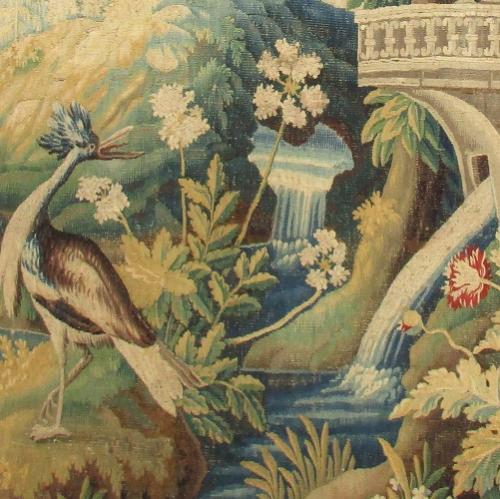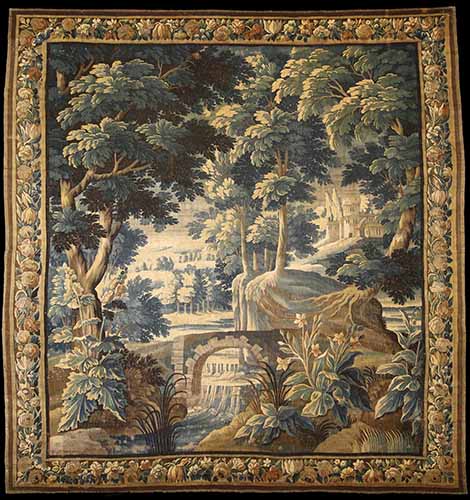

BADA is the leading trade association for the fine art, design and antiques community. Read our guide to caring for antique tapestries.
Lining textiles
Antique tapestries and textiles must be both lined and interlined.
A good lining will prevent dust filtration and help to deter pests.
An effective lining should be finely woven and light enough to avoid adding excess weight.
Your local BADA textile specialist will be able to recommend an experienced conservator.
Wall hanging
Seek advice from a specialist before hanging a heavy wall covering.
Effective support is critical to avoid damaging the warp and weft of your tapestry.
Atmospheric conditions, insects and dirt can all damage antique textiles.
Ensuring that your tapestry or textiles are correctly hung will greatly reduce the risk of damage.
If you are at all uncertain, consult a BADA specialist for advice.
Hanging materials
The best hanging method is to use velcro. This could be hand sewn to the reverse in wide stripes.
This allows heavy items to be hung easily and removed without distress.
The use of velcro will ensure that the weight of your textile can be distributed evenly. This will help to reduce the risk of sagging.
To prevent damage, avoid suspending a tapestry near a radiator.
It is also a good idea to avoid locating textiles in direct sunlight.
Exposure to direct sunlight will cause colours to fade over time.
Cleaning antique tapestries
Lightly dust or feather tapestries and velvet pile textiles.
Clean your antique tapestries regularly and look out for signs of fatigue or disintegration.
Advice about the restoration of antique textiles should be sought from a specialist BADA dealer.
To view dealers that specialise in tapestries and textiles click here
To view stock of tapestries and textiles click here
For advice on caring for antique Carpets & Rugs click here
For BADA recommended specialists in packing and shipping antiques and fine art click here

